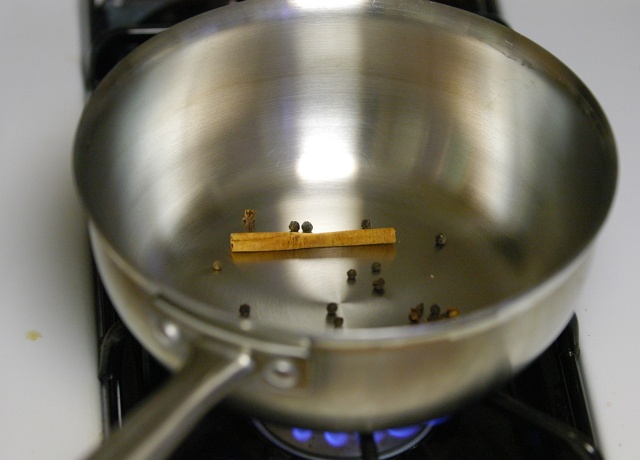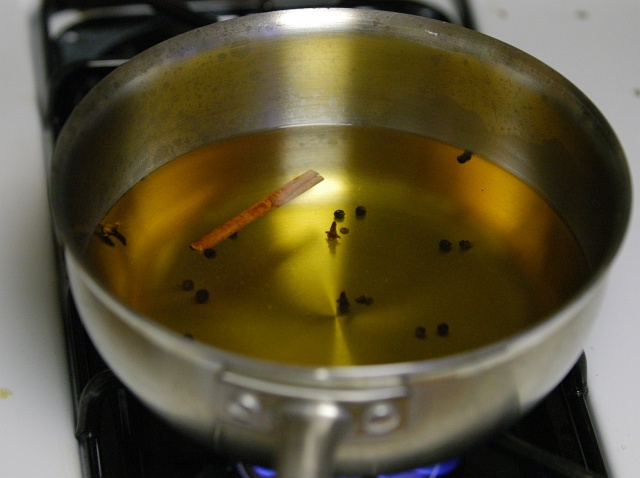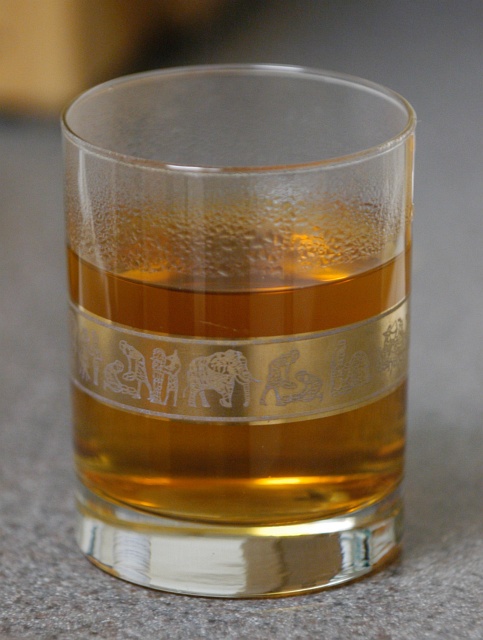The site I got this from: Mulled Cider from Cooking For Engineers
"Have you ever been enticed at a party by a wonderfully smelling mulled cider only to find that the taste was awfully bland or much too overpowering or filled with strange and unidentifiable flavors? I set out to come up with a formula for a mulled cider that had a clean, crisp taste with just the right mix of spices. Surprisingly, I found that by adding only five common ingredients, plain apple juice was transformed into the ultimate holiday beverage.
In the United States, apple juice and apple cider are almost exactly the same thing. Apple cider should not be confused with the products known as hard cider (which is a fermented product known to the rest of the world as "cider") or sparkling cider (a carbonated beverage made from apple juice). In fact, apple cider is a subcategory of apple juice. Apple cider is (supposed to be) the juice from apples produced by mechanical pressure. According to Wikipedia, apple cider is traditionally made from early-harvest apples and is therefore tangier than apple juice. In my experience and research, I haven't found any proof that this is true as a rule (although some brands will advertise that their cider is made from certain seasonal apples and prepared in a particular manner, I feel that these seem to be differentiating claims instead of applying to apple cider in general). Often, apple cider is associated with unfiltered apple juice, but you can find both unfiltered and filtered cider and juice labeled accordingly in the supermarket. In short, in the United States, there's really not much difference between apple juice and apple cider (speaking as a whole - some brands may differentiate their apple mixes to produce different flavors for their juices and ciders).
I like my mulled cider to be clear, so I generally use filtered apple juice or cider. I also use whole spices so they can be easily strained out before serving and don't leave a fine cloud or particulate matter and grit in my mulled cider. Some of the cider recipes that I've tried use coffee filters, the assembly of a bouquet garni, and other steps that I think are extra. This recipe uses a single pan, a strainer, and a zester or knife. I like it when it's simple.
To spice up one quart of apple juice, use one stick of cinnamon, about twenty whole black peppercorns, 3 whole cloves, and 2 tablespoons brown sugar. (The sugar quantity can be reduced down to one tablespoon, but I like it sweet.) In addition to these four ingredients, prepare some zest from a citrus fruit. In this example, I used the zest from half a Meyer lemon, but lemons, limes, and oranges all work perfectly. Use the zest from half a lemon, lime, or lemon-sized orange for each quart of apple juice. If you're using medium lemons, use about a third of the zest. Large oranges - use a quarter of the zest per quart of juice.

Select a pot or pan large enough to hold all the apple juice. Toast the cinnamon, cloves, and peppercorns to bring out their distinct flavors and aromas. Do this by simply heating your pan over medium heat with the spices in the pan. Toss the spices in the pan occasionally to prevent burning. The spices should become very fragrant within a minute or two.

Pour the apple juice into the pan and bring to a boil over high heat. When the apple juice gets warm, stir in the brown sugar so it fully dissolves.

Once the apple juice is boiling, reduce the heat so it just simmers (small bubbles form and rise to the top in a steady rhythm, but not at a furious rate). Add the citrus zest at this time. We don't add the zest earlier because we don't want the brief hard boil to break up the zest to the point where we will have difficulty straining it. If you're careful, you can add the zest with the brown sugar and watch the temperature to bring the juice up to simmering but not to boiling.
Maintain the simmer for thirty minutes. I do this with the lid off because it's easier for me to keep it at a constant simmer this way.
Pour the mulled juice/cider through a fine mesh strainer and into the container of your choice. If your cider has a great deal of particulate matter, you may want to place a cheesecloth or coffee filter in your strainer (or sandwiched between two strainers) to filter out the fine particles. Serve hot.

You can let the cider cool and then refrigerate for up to week. Bring it back up to a simmer before serving.
Mulled Cider (makes 4 cups)
1. Toast 1 cinnamon stick, 20 whole black peppercorns, 3 whole cloves.
2. Add 1 quart apple cider or juice and heat through.
3. Dissolve 1 to 2 Tbsp brown sugar.
4. Add zest of 1/2 a lemon and simmer 30 minutes.
5. Strain.
This recipe can be scaled by simply scaling the ingredients. Leave the simmering time at thirty minutes."
Written by Michael Chu
No comments:
Post a Comment